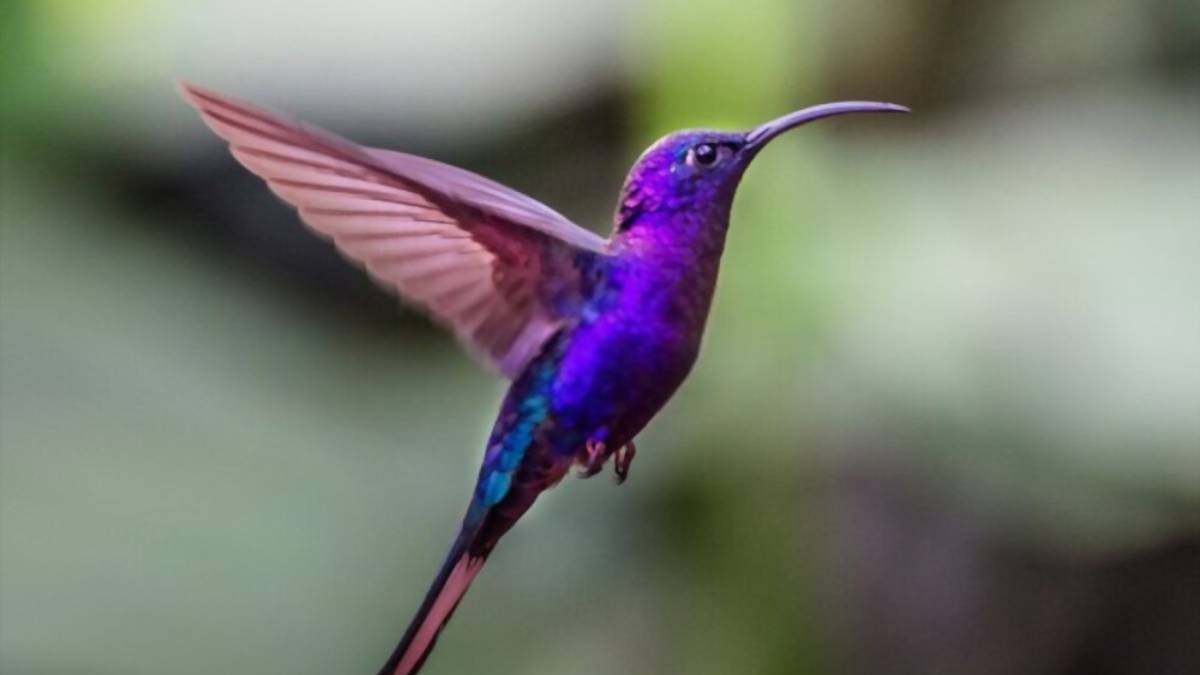The way they flutter around in a blur of blue, green and flashes of red and pink, you’d think hummingbirds have an endless supply of energy stored in their tiny bodies. But, they too need sleep and time to replenish their energy levels.
So, how often do hummingbirds sleep? Like other birds, hummingbirds do fly during the day and sleep at night. However, during the migration time, they don’t find land to sleep and therefore, they are seen flying during the night in the Gulf of Mexico.
There’s been much curiosity about hummingbirds’ sleep habits: how do they sleep, when do they sleep, where do they sleep and how often do they sleep. Let’s read ahead to find out.
How much energy do hummingbirds burn every day?
A hummingbird flaps from flower to flower and consumes a whopping three to seven calories a day. Hold on, that is actually a tremendous amount for a bird that small. If you’re wondering what that translates to in humans, let me tell you, that’s 155,000 calories a day. Feeling jealous about how good their metabolism is, yet?
Because they have such high metabolism and because they burn that energy so quickly, adequate sleep-time isn’t just important, it’s absolutely necessary for them to recharge and survive.
Have you wondered how long a hummingbird has to sleep to get all that energy? Do they need seven hours like us humans to refuel?
How long do hummingbirds need to sleep?
Evolution has provided them with the perfect solution to this extreme situation, a special sleeping pattern called Torpor that allows them all but go into a self-induced coma, allowing them to recharge.
The entire process only takes them somewhere between 20 and 25 minutes—you read that right—but without it, a hummingbird wouldn’t make it through the night.
What is Torpor?
When they sleep, hummingbirds go into a state of hibernation called Torpor, which is, in essence, a really deep sleep where their body metabolism drops to 1-fifteenth of their normal metabolic rate, allowing them to save as much of their energy. Their heart rate will drop from 1,260 beats per minute to a measly 50 beats a minute.
Why is Torpor so important?
- To help hummingbirds deal with their high metabolism.
- It helps them maintain their core body temperature. When they stop moving, a hummingbird’s body temperature drops and especially at night when the air is cool, they need some way to help them regulate their temperature and survive.
- Torpor allows the hummingbird to retain their energy and function even when they have a low reserve of calories in them.
Where do hummingbirds sleep?
Usually, hummingbirds are very particular about where they sleep.
Why?
Because for the 20-30 minutes they are in torpor, they cannot respond to any stimuli and are very vulnerable. Their need to find the right spot stems from their need for warmth and heat. Their feathers do not insulate them so they depend on a warm shelter to help them stay warm.
They will nestle away between the warm foliage of leaves of trees, or find a good, solid branch. Sometimes they sprawl, and often, they even hang down from branches, with their feet clutching them tightly.
If you happen to come across a hummingbird in this state of hibernating sleep, you’d think he was dead. They hardly move and don’t appear to be breathing or showing any signs of life, preferring, instead to save up their energy for when they wake up.
Foe more information on this, you must check our post where do hummingbirds go at night!
Frequently asked questions
Are hummingbirds like bats?
Only in that one way that they both tend to hang down from trees when they sleep. But otherwise, there aren’t many similarities between the two species.
Do hummingbirds sleep together to preserve heat and energy?
Hummingbirds don’t often travel in flocks, nor are they particularly social birds. That being said, you can find that sometimes, several hummingbirds will sleep in the same tree or bush, but almost always spaced out, as opposed to huddling together.
With regard to preserving heat and energy, going into a state of torpor helps achieve both, and they don’t huddle together to do so.
What do I do when I find a sleeping hummingbird?
A sleeping hummingbird is extremely vulnerable as it cannot respond to external stimuli when in torpor. So if you find one hanging upside down a tree clutching a branch, or sprawled somewhere, deep in sleep, just leave them be.
If you believe that they might be in danger of getting attack, carefully place them somewhere they can wake up to without panicking, with access to fly away when they’re ready. You can keep a tiny cup of water nearby.
Exceptions to their sleeping habits
There are always some exceptions when it comes to hummingbirds sleeping habits.
- Have you installed lights in your backyard and garden? If yes, you can probably see hummingbirds feeding late in the night but this can only be seen during the warmer climate.
- During migration, Ruby Throated Hummingbird cross Mexican Gulf and therefore they have to keep flying for 20-24 hours continuously. Many fishermen have seen them flying low over the water at the time of migration.
I hope this article has answered all your questions about hummingbirds sleeping habits. Let me know in the comments if I missed anything.


